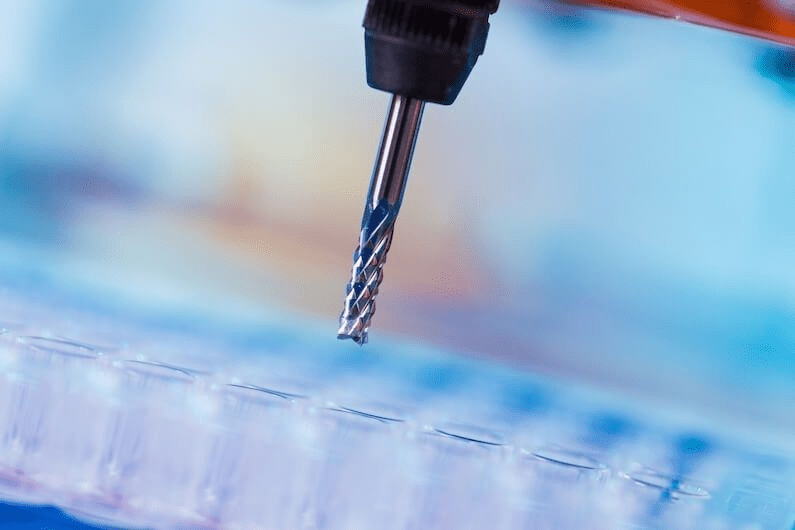
Key Considerations for CNC Machining Plastics: An Expert Guide
CNC machining is a universally adopted manufacturing process for creating high-quality parts from a diverse range of materials, including metals, ceramics, composites, and woods. Among these, plastics hold a significant place due to their versatility, though they present a unique set of machining challenges. While machinists can expertly tune speeds, feeds, and tools for metals like steel, aluminum, or brass, applying the same parameters to plastics often leads to subpar surface finishes, dimensional inaccuracies, and high scrap rates.
Successfully machining plastic components requires an understanding of their distinct behaviors and the common pitfalls to avoid. This guide outlines the critical considerations for optimizing your CNC plastic machining projects.
The Unique Challenges of Machining Plastics
The two most prevalent challenges machinists face with plastics are achieving a high-quality surface finish and maintaining dimensional stability. Tool chatter, friction, or poor chip formation can instantly mar the surface with gouges and scratches. Furthermore, any factor causing the plastic to compress, expand, or overheat during machining can prevent it from returning to its original shape, resulting in parts that fall outside tight tolerance bands.
Most quality issues in CNC machined plastics stem from the following sources:

1. Poor Chip Formation
Softer, more ductile plastics tend to “flow” around the cutting tool instead of forming clean chips, similar to pushing a finger into wet clay. This causes deformation and poor edges. Conversely, harder, more brittle plastics can fracture unpredictably, especially near edges, where large chunks may break away, leaving small cavities.
2. Clamping Distortion
The stress applied during fixturing can cause elastic deformation in plastic parts. Once the part is machined and released from the clamps, it springs back to its original shape, often causing it to go out of tolerance.
3. Poor Chip Evacuation
If plastic chips are not swiftly cleared from the cutting zone, they can recirculate and weld themselves to the tool’s flutes or the workpiece. This poor chip evacuation reduces cutting efficiency, increases friction, and causes a rapid rise in temperature, which can melt the surrounding material.
4. Low Heat Deflection Temperature
Many engineering plastics have a relatively low heat deflection temperature. The heat generated during machining can cause them to soften dramatically, making them susceptible to deformation from clamping forces, cutting pressure, or even their own weight.
5. Thermal Expansion
Polymers have a much higher coefficient of thermal expansion than commonly machined metals. As the part overheats, it expands. When it cools post-machining, it contracts, often shrinking beyond the intended dimensional tolerances.
6. Chemical Reactivity
Certain polymers are sensitive to specific coolants, lubricants, or even cleaning solvents. Exposure can cause them to dissolve, swell, or become brittle. It’s crucial to know which chemicals are compatible with the polymer you are machining.
7. Moisture Absorption & Retention
Like chemical reactivity, some plastics (hygroscopic polymers like Nylon) absorb significant moisture from the air, causing them to expand. Machining a part that has absorbed moisture will result in a component that shrinks and warps once it dries out in a controlled environment.
8. Maintaining Transparency
Transparent polymers like Acrylic (PMMA) and Polycarbonate (PC) are prone to clouding or hazing if the machined surface finish is not perfectly smooth. Achieving optical clarity requires impeccable machining practices and often a final polishing step. Some are also susceptible to degradation from UV exposure.
It is important to note that not all plastics exhibit these issues equally. For instance, PEEK is highly resistant to heat and chemicals but can be challenging to machine without specialist knowledge. PVC can produce toxic fumes when overheated. Therefore, selecting the right plastic for your application and its machining requirements is paramount.
Expert Tips for Machining Plastics
To overcome these challenges, consider the following best practices:
- Sharp Tools are Non-Negotiable: Use razor-sharp, highly polished tools with positive rake angles designed specifically for plastics. This ensures clean shearing rather than tearing.
- Optimize Feeds and Speeds: Higher spindle speeds and faster feed rates often help by shearing the material quickly before heat can build up. However, parameters must be fine-tuned for each specific plastic type.
- Master Chip Evacuation: Use compressed air or vacuum systems to actively remove chips from the cutting zone. This is critical for deep pocket milling and drilling operations.
- Minimize Clamping Pressure: Employ dedicated plastic fixtures, soft jaws, or vacuum chucks to distribute clamping force evenly and prevent distortion.
- Consider Coolants Carefully: While often unnecessary, a mist of compressed air or a compatible coolant can help manage heat. Ensure the fluid will not chemically attack the plastic.
- Allow for Material Stabilization: For hygroscopic materials, precondition the stock to the environment where the part will be used and machine it promptly to minimize moisture reabsorption.
(Conclusion)
CNC machining plastics demands a specialized approach distinct from metalworking. By understanding the material properties and implementing precise machining strategies, you can achieve exceptional results with tight tolerances and flawless surfaces.
Partner with a Precision Expert
At [ttdintel], we possess the deep material science knowledge and technical expertise to navigate the complexities of CNC machining over 50+ engineering plastics. From DFM advice to final execution, we ensure your plastic components are manufactured to the highest standard.
Contact us today for a consultation and quote. Let our expertise turn your plastic part designs into reality.
